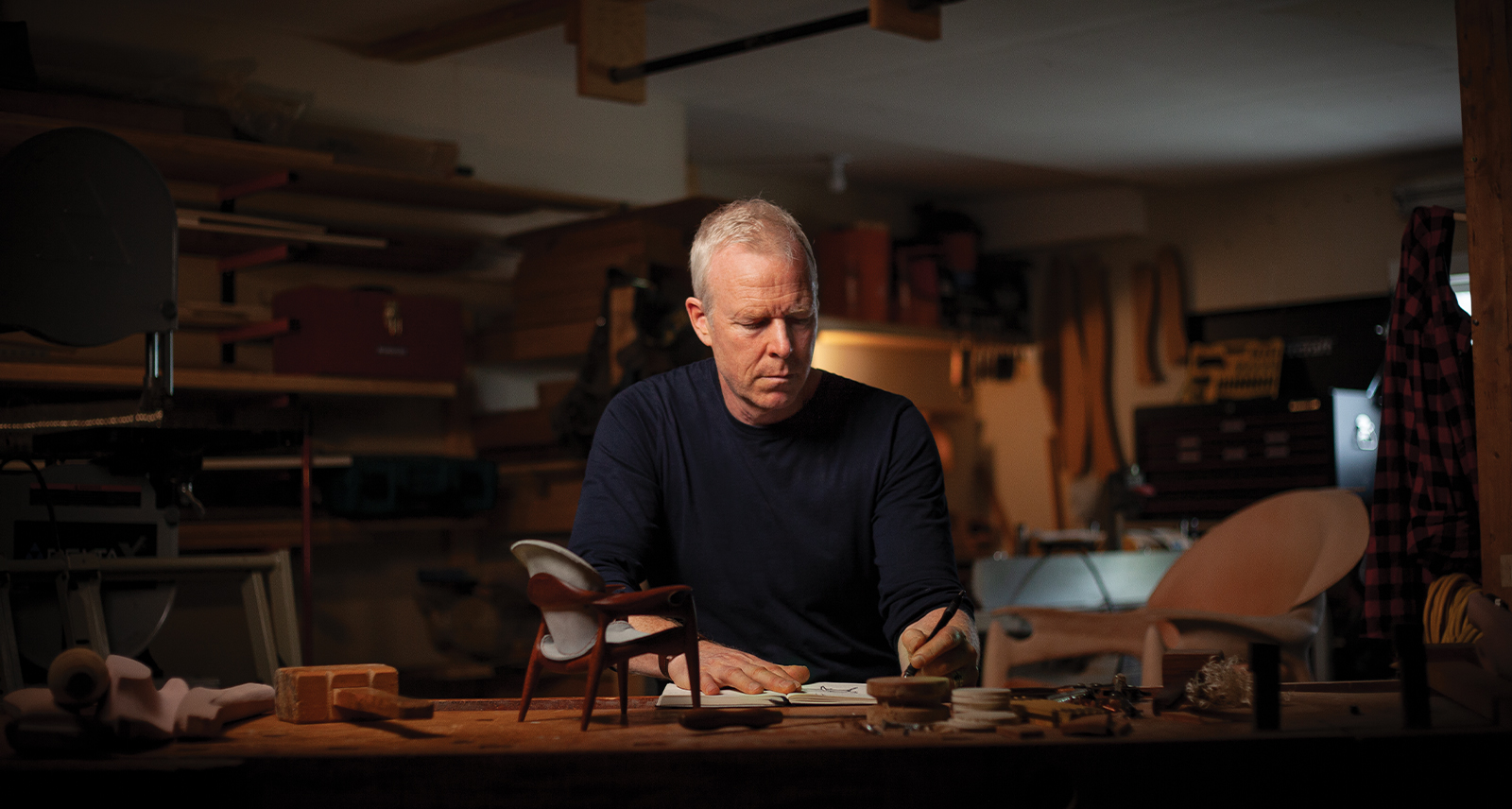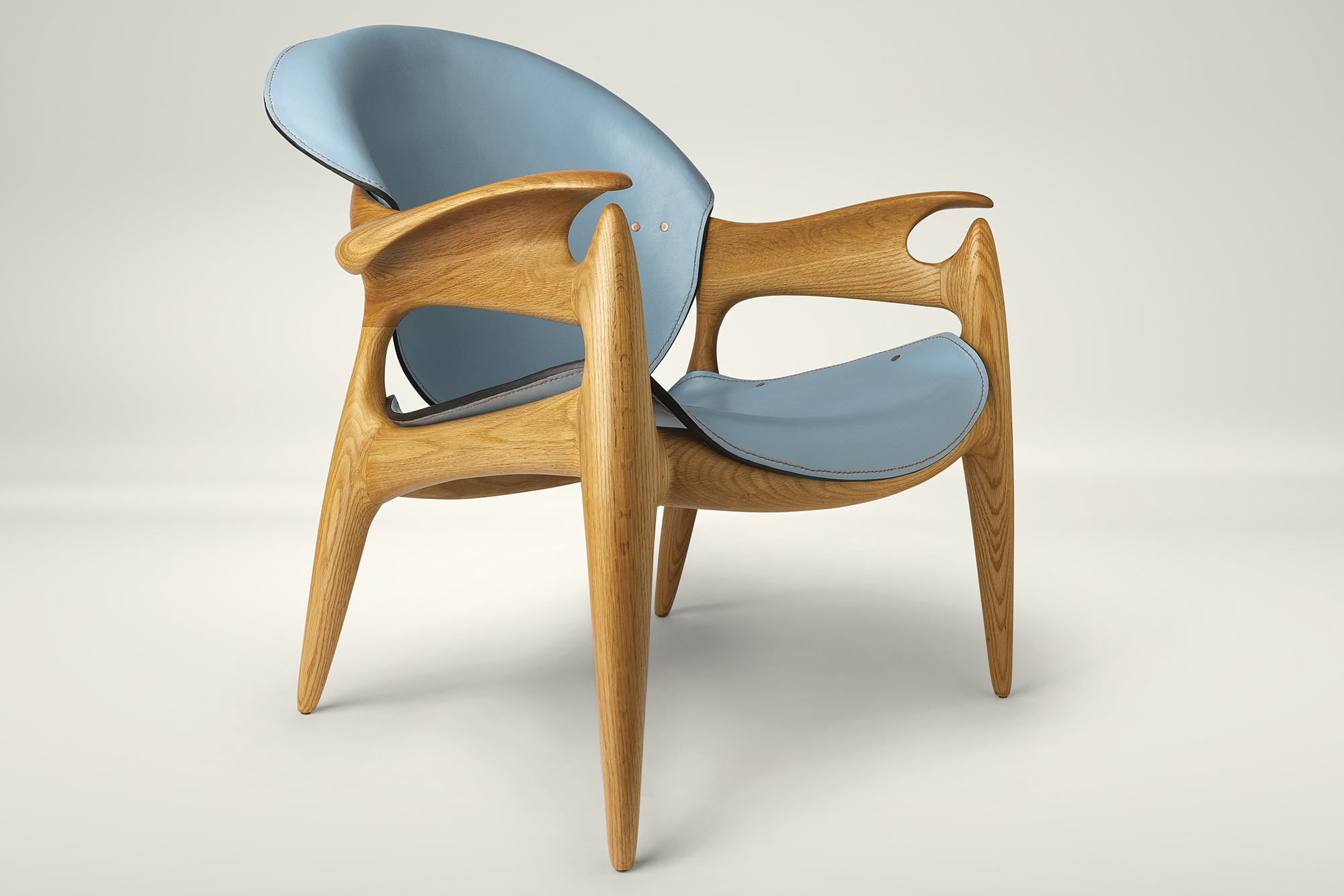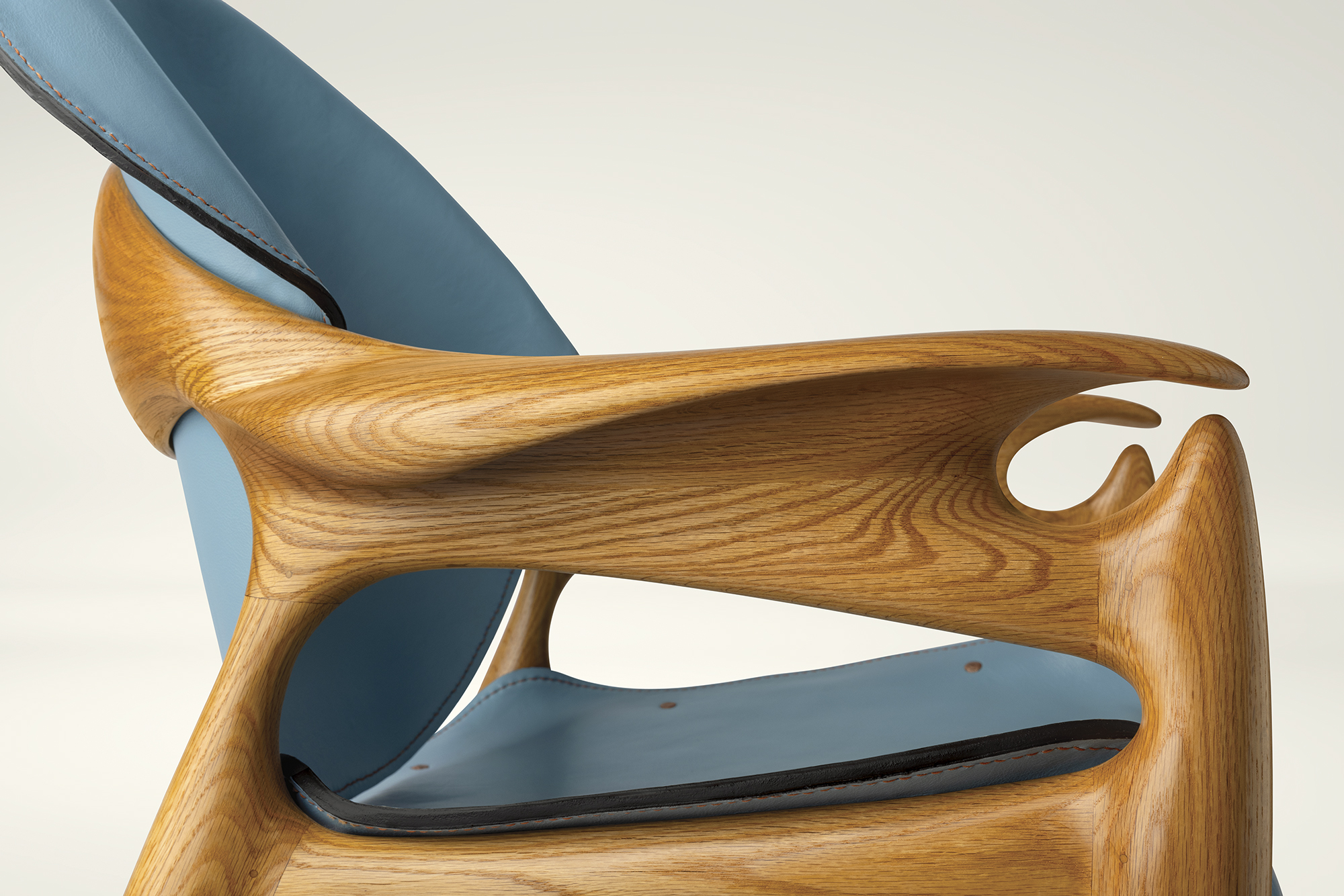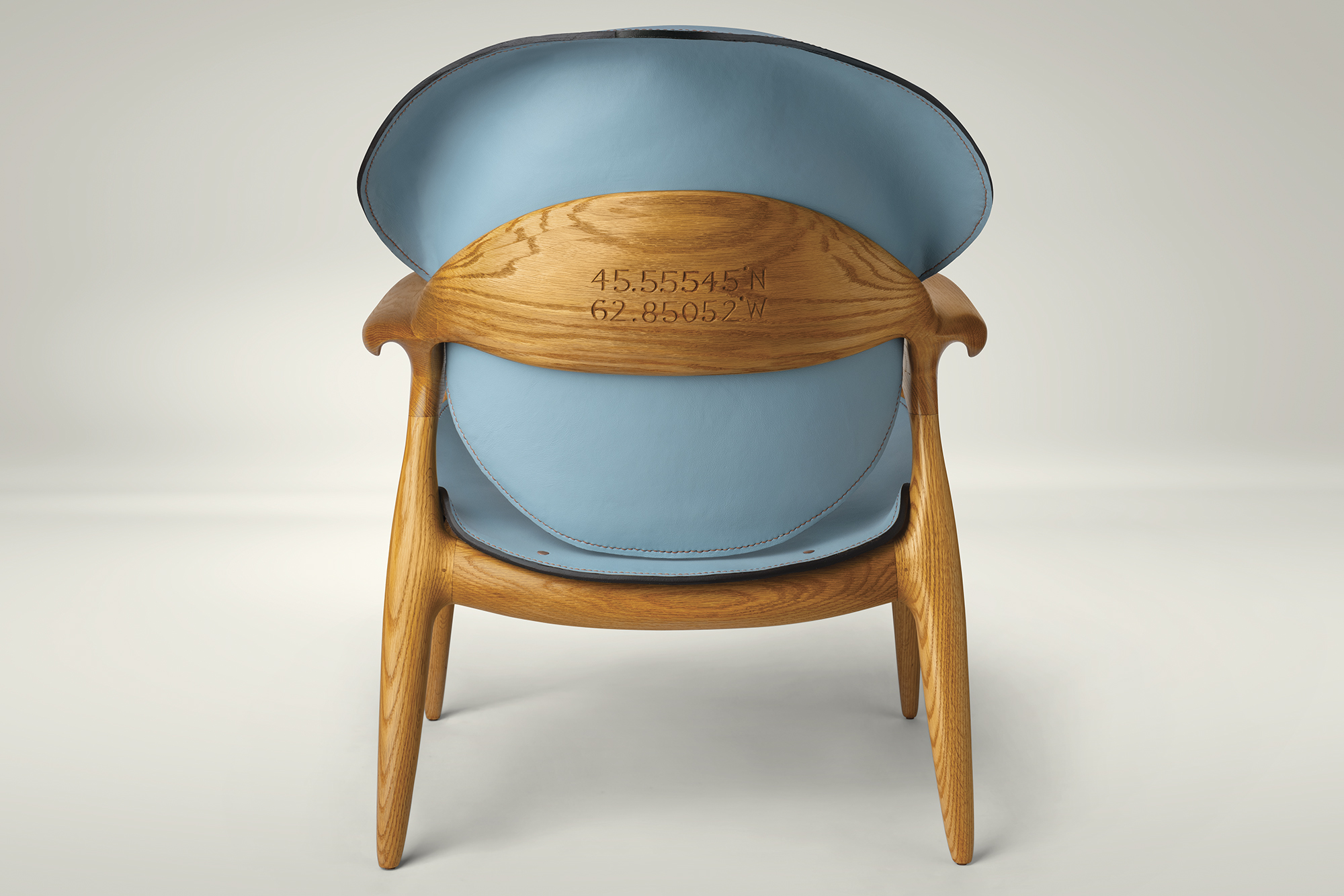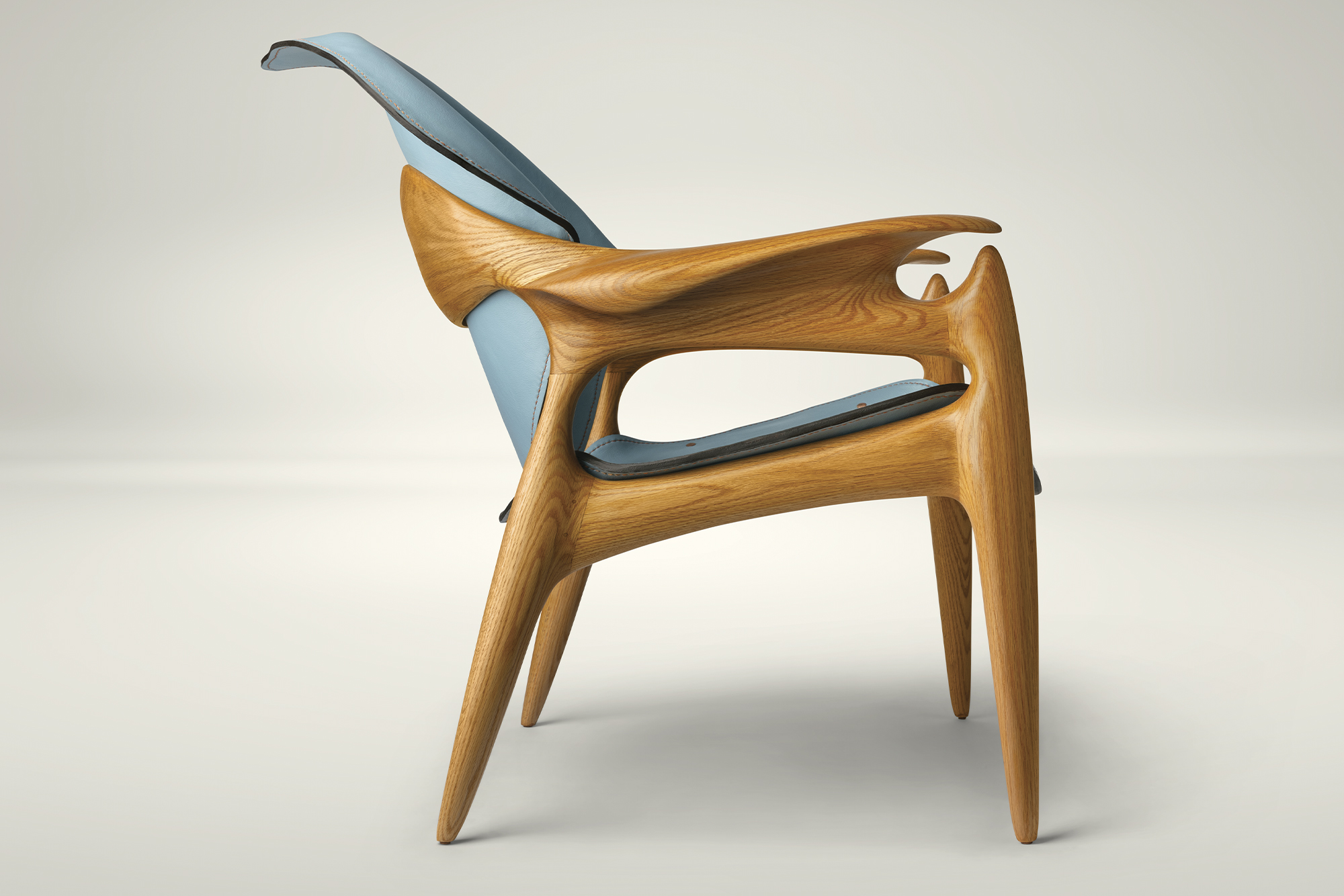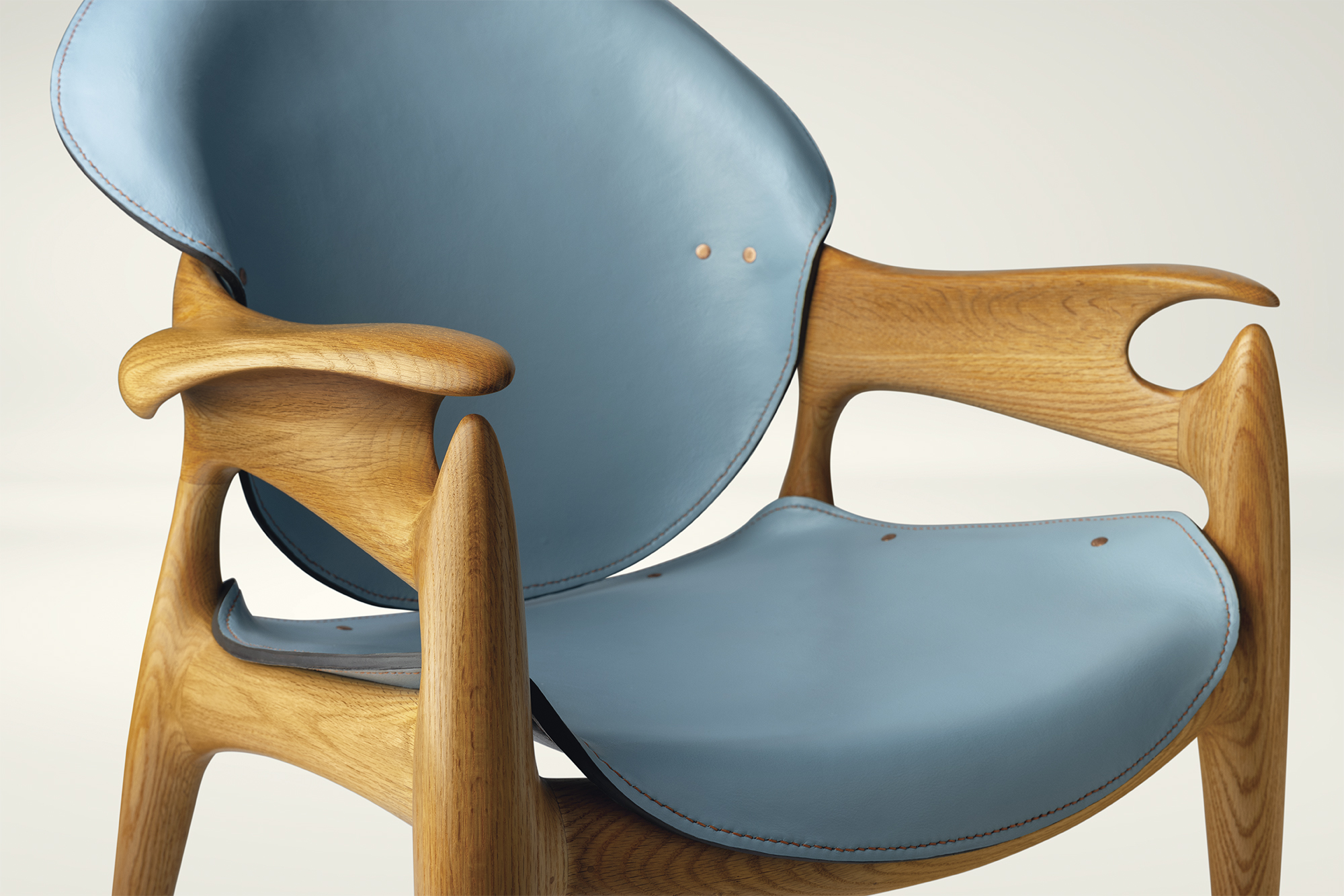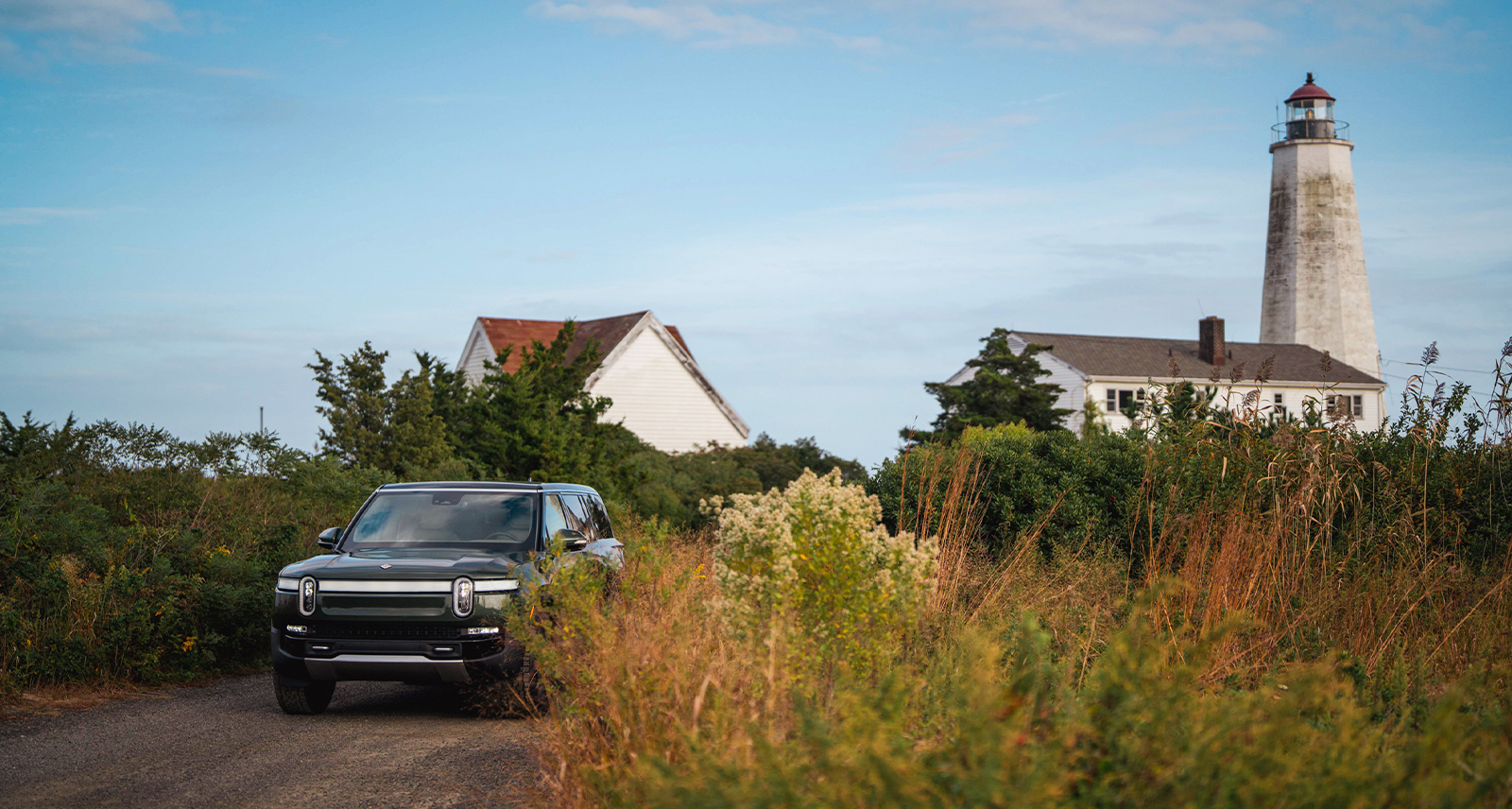For Hurricane Relief, Jonathan Otter Turns Debris Into Design
Rain poured down in huge, dramatic sheets, filling the air. The wind pushed through the landscape with such violence that it cracked trees in half, sending them plummeting to the ground or crashing through power lines. Cars were abandoned on flooded streets and homes were completely blown apart by falling debris, leaving nothing but messy piles of wood and detritus. It was September 24th, 2022, and post-tropical Hurricane Fiona had swept ashore in Nova Scotia, ripped through the Maritimes, left half a million people without power, and caused hundreds of millions of dollars in damages.
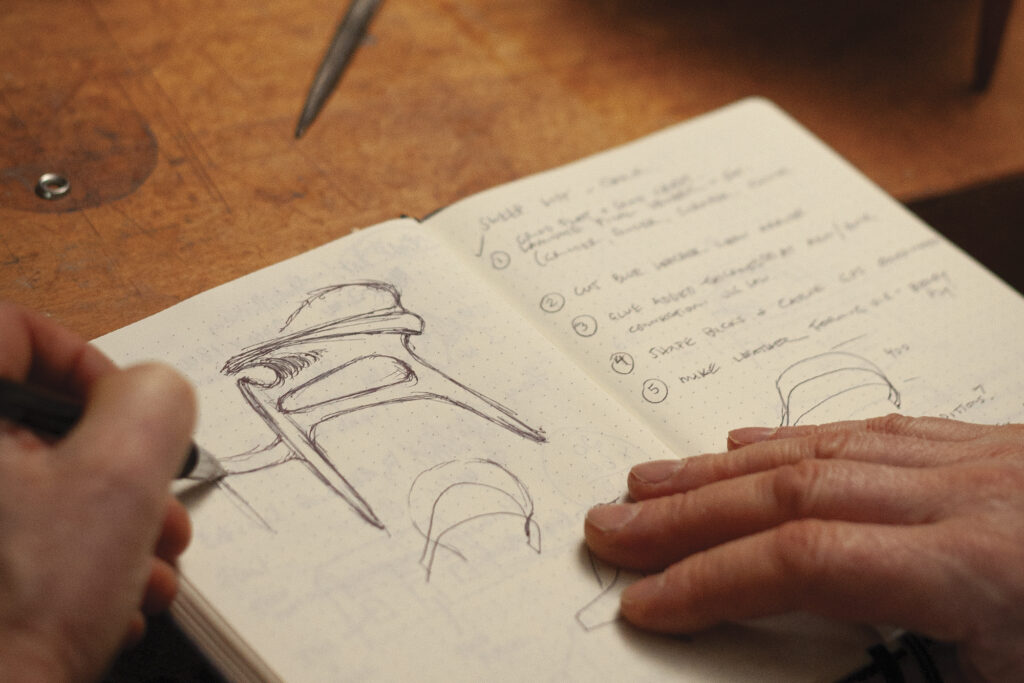
When the storm hit, Nova Scotia-raised furniture-maker Jonathan Otter was in Cork, Ireland, where he lives with his wife and nine-year old daughter. But even with the Atlantic Ocean separating him from Fiona’s impacts, the hurricane still hit close to his heart. The north of the province, where he grew up, was particularly affected. On his parents’ land, all the trees were completely flattened, and when he spoke to his parents on the phone, his father remarked that he could clearly see the back boundary line for the first time ever. Decades of hard work implementing a meticulous and sustainable forestry plan were undone in mere minutes. So, when Timberland approached Otter looking to collaborate on a chair, one that would be sold at auction to generate money for victims of the storm, the designer jumped at the opportunity.
Otter is primarily known as a chair-maker and is celebrated for his simplistic-yet-gorgeous, hand-carved designs. His Lounge Chair No. 2 — one of which is now a part of Canada’s House of Commons collection — is based on a classic Windsor chair, with its spindles, continuous armback and wooden seat.
He took this iconic and easily recognizable form and stripped it back, resulting in a beautiful blend of contrasting dark walnut and light ash, with the back and arms curving together in a fluid, natural way. Lounge Chair No. 3, with its black walnut frame and hand-stitched white leather seat, won international accolades at the prestigious Arts & Craft Design Awards. But Otter’s deliciously tactile, sensuous designs — and the hundreds of hours of painstaking labour that go into them — don’t come cheap: his chairs can sell for upwards of $30,000.
“To make a chair that’s both beautiful and comfortable is the holy grail of furniture making.”
Jonathan Otter
The designer has always been drawn to the chair as an object, finding something special in the intimate way it fits into a home. “It’s easy enough to make a beautiful chair,” reflects Otter, “and it’s easy enough to make a comfortable chair. But to make a chair that’s both beautiful and comfortable is the holy grail of furniture making.” He muses that throughout history there have only been a few designers — he won’t name names — who have completely nailed it because, while chairs are required to fit the body, everyone’s body is different. A chair needs to be both practical and artistic, a treat both to look at and to sit in. And this challenging of finding balance is the reason Otter has found himself drawn to chairs again and again.
Otter has no formal training in furniture-making; instead, he learned his trade through a combination of voracious reading and growing up with a carpenter for a father. As a child on his parents’ 400-acre, forest-surrounded farm, he would frequently assist with projects and repairs, or take on his own. He made toboggans, bows and arrows, and a functional boat to use in the nearby river. One year, when he was 13, he lost his whole summer to building barns with his family. “I said at the end of that summer I would never work with wood again,” Otter jokes.
“Whatever you make from a tree should last for as long as it takes for another tree to grow in its place.”
Jonathan Otter
But, of course, he did: the material takes centre stage in all his designs. And the way Otter talks about it — with immense, often awestruck admiration — borders on the obsessive. “It’s the grain, the growth patterns, the annual rings, the colour. It begs to be sculpted and polished and shaped. I love the smell of it. It goes quite deep.” Growing up, Otter’s parents instilled in him a respect for trees and a sense of responsibility to care for them. They were some of the first landowners in the area to implement a forestry plan and the way they lived taught him how to approach wood ethically. Because of this, it’s become very important to him that his furniture lasts for a long time. He brings up an old saying from the Shakers, a nearly extinct egalitarian Christian sect from England: “Whatever you make from a tree should last for as long as it takes for another tree to grow in its place.” Which means, if it takes a century for a tree to grow, your chair needs to last at least 100 years. “That’s not greenwashing,” he remarks. “The Shakers really lived that way. And if we all lived that way, the earth would probably look a bit different.”
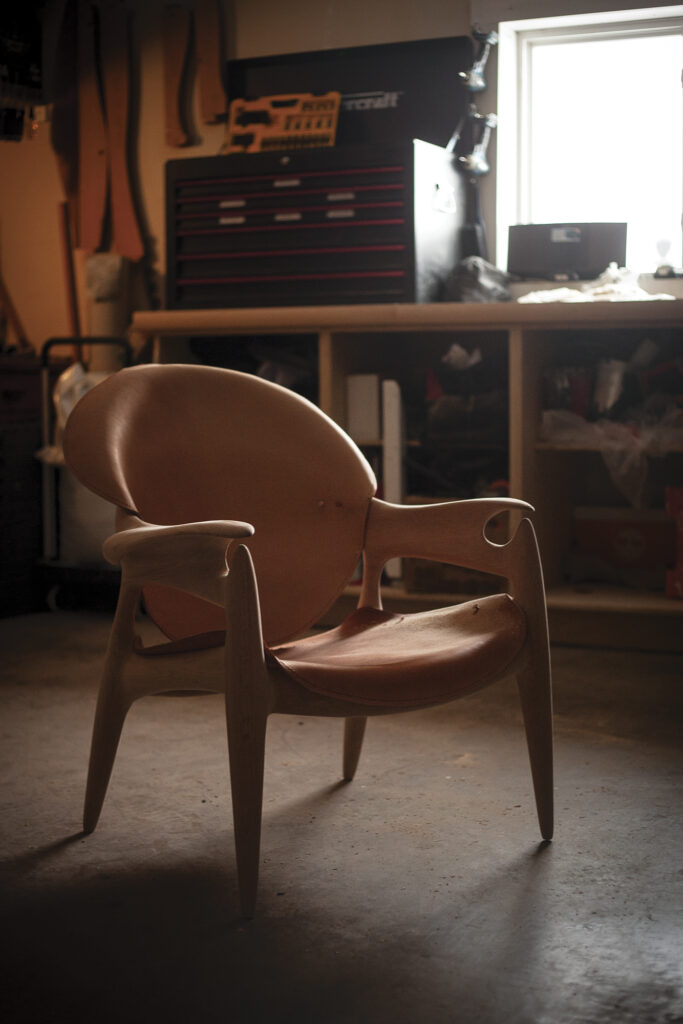
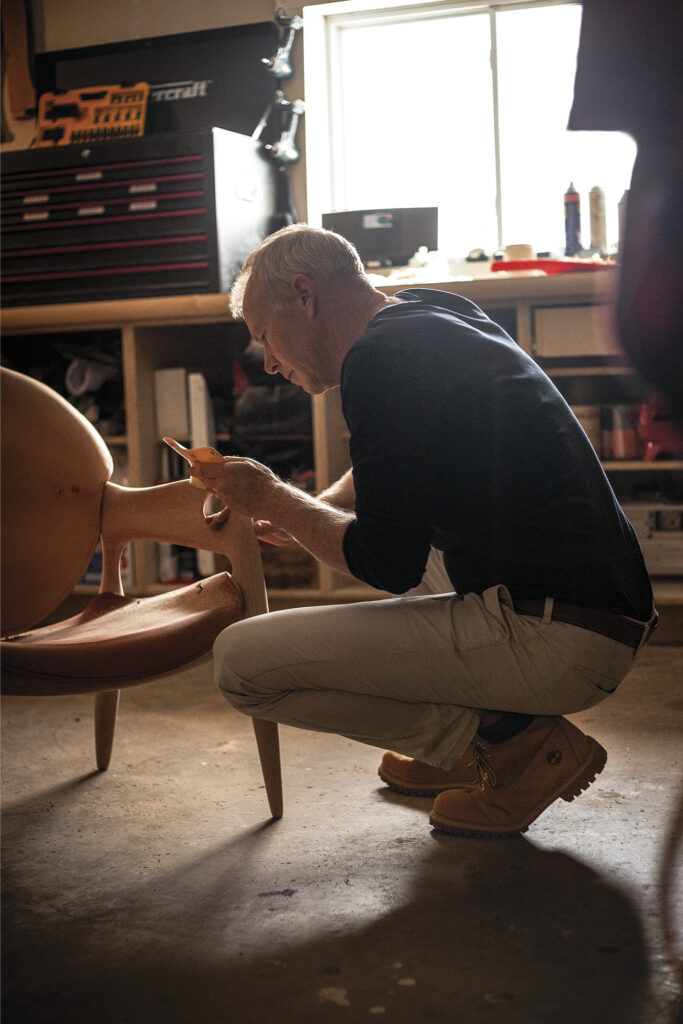
In the early 2000s, Otter decided to try turning his interest in furniture-making into a business, opening a small workshop behind his home in Halifax. He worked there until moving to Ireland with his wife in 2017, where he joined the renowned Joseph Walsh Studio. Here, experimental, ambitious projects continue to stretch him to and beyond his professional limits. At home, he tinkers in his workshop alongside his daughter, who has recently taken an interest in jewellery-making. “Without forcing anything,” Otter says, “I hope that one day we might work together in a design practice. She certainly has an aptitude for it.”
When Timberland reached out to Otter seeking to collaborate, the footwear brand asked him to completely take the reins on the project and create whatever he wanted. It was a designer’s dream. He spent months “thinking about a hurricane and meditating on what it does,” while looking at pictures of Fiona’s aftermath. He came across a photo of a piece of metal that the wind had blown against a tree so forcefully that it wrapped around the trunk.
“The premise of the chair was ‘outside is the hurricane, inside we are calm.'”
Jonathan Otter
This idea of a material being powerfully imprinted with an object’s outline became the foundation of the chair. Otter took thick saddle leather, soaked it, sculpted it, and dried it so it retained its shape. He bent it in a way that, when placed onto the chair’s wooden frame to create the seat, looks as if it was thrown into place by a storm’s heavy winds. The leather is dyed a bright blue and hand-stitched with burnt orange thread — hues deliberately chosen to reflect the lively spirit of the region’s people. The armback curves forward in a fluid, natural motion, and ends with sharp details that look a little like antlers. The legs, angled slightly backward, give the chair a sense of motion. On top of that, it is made from the wood of a Northern Red Oak tree downed in the hurricane. On the chair’s back, you’ll find hand-carved GPS coordinates of exactly where it fell.
Fittingly, Otter decided to call the chair Made From Fiona. The name rings true in two ways: literally, in terms of the wood; and metaphorically, in terms of how it captures the resilient, vibrant character of the Nova Scotians. “The premise of the chair was ‘outside is the hurricane, inside we are calm,’” says Otter. A storm, he says, can be a terrifying experience, but if you know that you’ll be able to make it out, that your people will be there for you and you can rebuild, the fear doesn’t totally take over. Know this and there’s a calm to be found amidst the danger — like the eye in the centre of a raging hurricane.
